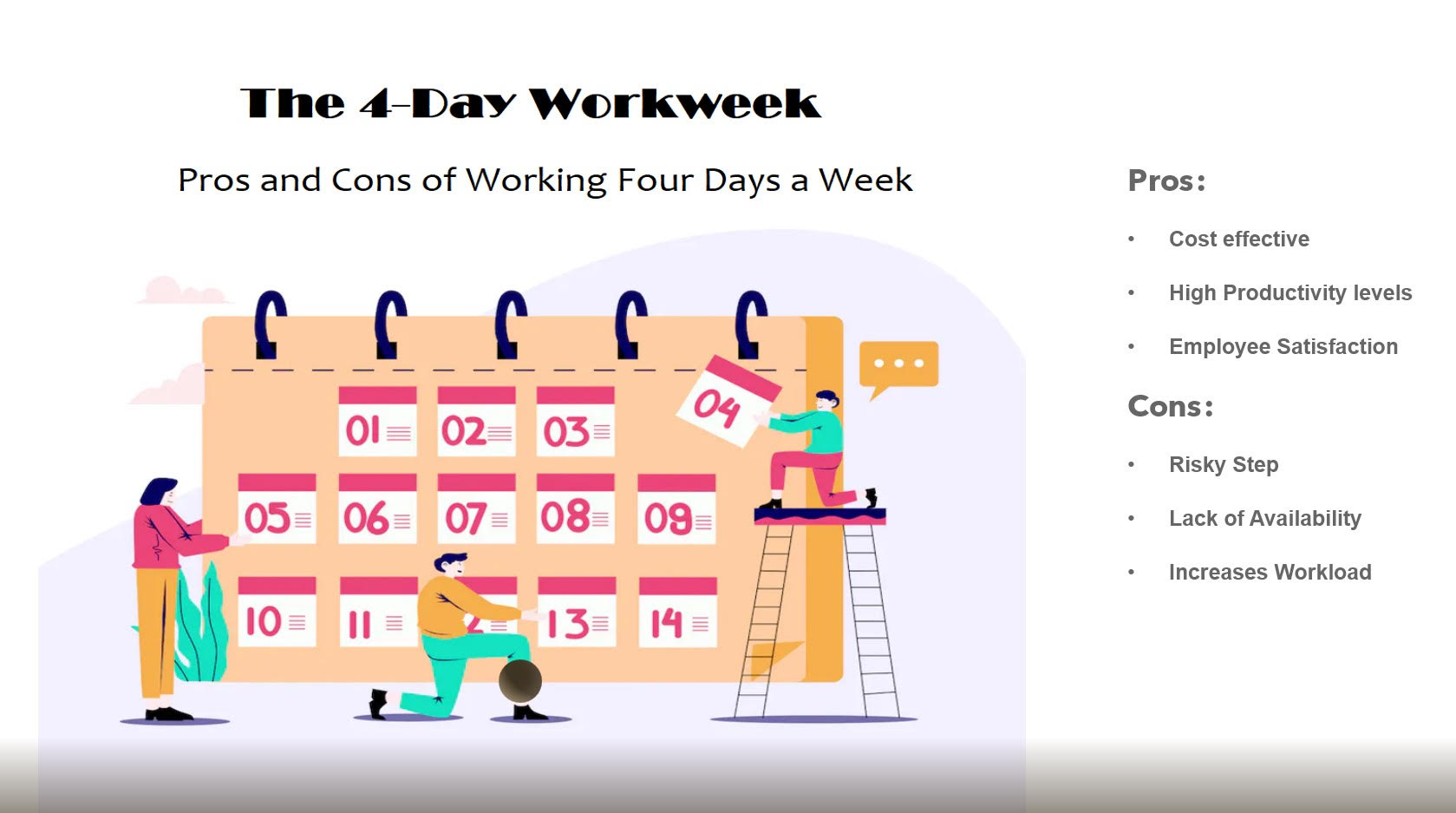Breaking the stereotype culture of working 5 days a week is not an easy sell in North America. Organizations are adopting a popular trend of “The 4-day workweek” in many European countries and across the world, so why aren’t we? “Work less and be more productive” is the fundamental idea behind this proposal.
After the release of an Icelandic study and the emergence of the Pandemic forcing more flexible and hybrid work schedules, the 4-day workweek has gained a lot of attraction. Countries like Japan, Spain, Scotland, Ireland, and Iceland have embraced this movement on a very significant scale. Organizations and employees are discovering many positive aspects by applying this work model. However, this concept is not new. The David Suzuki Foundation implemented its own version back in the 1990s. While Expedibox, a smart-locker supplier based in Madoc, Quebec, has offered a reduced work week since its founding in 2017.
So, what is the 4-Day Workweek? It’s a concept where an employee works for four days a week for 32 hours instead of 40 hours in five days. And the salary remains the same. The goal is to accomplish similar results in fewer hours. In short, 100% pay in 80% of the time with 100% productivity. Studies have stated that both employees and businesses can gain a lot of benefits through this policy. According to a survey conducted in New Zealand 67% of the workers are enjoying this adaptive working schedule. Many companies have offered variations within this model. Some have changed the start/end time whereas others have offered hybrid or remote work.
While there’s a lot of focus on the benefits, often the risks are not fully considered.
A flexible schedule comes with its own negatives and positives. Before shifting to this model one should always consider its risk and the amount of outcome attained through it. Some major key points for this 4-day workweek to be a great idea are that it provides better work-life balance, low-level stress, and high productivity.
Here are 7 Benefits of a 4-day workweek:
- By providing a better work-life balance this model acts as a motivator for the employees. Companies support their employees on and off the job which strongly motivates them to work hard in order to retain this benefit. Employees willingly put in more effort for these 4 days to move things along and enjoy their 3-day weekend.
- The 4-day work week is cost-effective for both employees and organizations. Workers avoid the extra expense by coming 4 days per week to the office instead of 5 days. Vice versa, organizations can have an immediate reduction in overhead cost, office expenses, and utilities.
- Even electrical expenses are reduced by up to 20% just by being shut down for an extra day. This somehow has reduced the company’s carbon footprint providing an environmental benefit.
- A compressed schedule provides high productivity levels as an employee feels responsible to complete the work within the given period. Microsoft Japan, in 2019 found out by applying a 4-day work schedule increased its productivity by 40%.
- A 32-hour work week is equal to a low-stress level and more happiness which gives employee satisfaction. It brings trustworthiness in an employee-worker relationship.
- This flexible working schedule promotes time-saving which allows a worker to look for new methods and procedures to be innovative at his workplace.
- It promotes equality, regardless of gender by allowing the workers to save time for fulfilling their childcare and family responsibilities.
On the flip side, here are 7 Downsides of a 4-day workweek:
- Cutting hours from 40 to 32 every week is a risky step. Employees may not be able to complete their entire work in the given period, hence reducing productivity.
- Managing client needs and scheduling internal meetings can be difficult. Not every employee can be available at that time.
- Some organizations deal in production and customer services which makes It difficult to provide coverage to the customers if employees have different working schedules.
- The government of Utah had to shift back to the standard schedule after implementing of flexible hours for 3 years because the lack of availability of employees was affecting economically.
- The 4-day workweek brings a negative impact on freelancers and side hustle jobs wherein people work on an hourly basis to make ends meet. Deduction in working hours means low pay for them.
- An employee might end up doing overtime to complete the work requirement. It makes employers responsible to pay extra overtime wages hereby, increasing the company’s cost.
- It increases the workload for managers. They need to keep a check on overtime hours, schedules, and performance of every employee.
Before implementing the 4-day workweek discuss all the opportunities and risk factors this transition brings to your company. Analyze if it is right for your business. This transition may work for some industries and may not work for others. The more variance in the workforce, the more challenging it will be.
Ask yourself, how involved are the employees in this policy? Is it optional or mandatory? Can employees perform their tasks smoothly? Should salaries be adjusted according to the hours? Once you have carefully examined every aspect then move forward with the 4-day workweek plan.
Workplace flexibility demands are greater than ever. An increase in remote work during the covid-19 led to an increase in the desire for flexible workplace arrangements. Employees are requesting their companies consider the compressed workweek policy. Just like every rose has its thorns, work-life balance is definitely the priority, but it comes along with structural and industrial concerns. Understanding the needs of your business will tell whether the 4-day work week is a great idea for you or not.
Contact HR4U if you are considering a 4-Day workweek program: https://fractionalhumanresources.com/contact-hr4u/
References:
- Four-Day Work Week
- Is the 4-Day Workweek right for your company? (April 01, 2022)
The 4-day work week: benefits and risks | BDO Canada
- Louise Gaille (June 29, 2019) 14 Pros and Cons of four-day workweek
14 Pros and Cons of the 4 Day Work Week – Vittana.org
- Riia O’ Donnell – The 4-Day Workweek: Pros and Cons
The 4-Day Workweek: Pros and Cons – Workest (zenefits.com)


